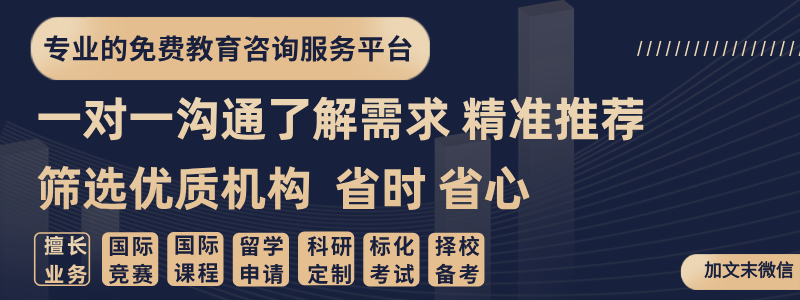ChatGPT 介紹
ChatGPT, which stands for Chat Generative Pre-trained Transformer, is a chatbot developed by OpenAI. OpenAI 公司最近推出的一個(ge) 聊天機器人,目前隻有網頁版本。
下麵是NYT 的介紹

ChatGPT 最大的特點一個(ge) 是文字更為(wei) 自然了,第二個(ge) 是可以自發的生成一些內(nei) 容,比如可以寫(xie) 詩。 因為(wei) 和文字創作有關(guan) ,所以上月底上線以來,各個(ge) 媒體(ti) 的報道就很多。NYT到目前還處於(yu) 每天有2-3篇核心談ChatGPT 的文章

WSJ 做了一個(ge) 有意思的實驗,讓ChatGPT 去寫(xie) 一篇 12年級的AP Literature 的作業(ye) ,老師給了一個(ge) Pass

剛好在labhaohao.cn 平台有同學問了一個(ge) TOEFL 的題目,就想不妨讓ChatGPT 來寫(xie) 個(ge) TOEFL 的文章

下麵是ChatGPT 寫(xie) 的關(guan) 於(yu) 這個(ge) 話題的文章
完整的文章
It is generally agreed upon that it is important to have rules about the types of clothing that people are allowed to wear to work and school. There are several reasons for this. First, certain types of clothing can be inappropriate or offensive to others. For example, clothing with explicit or offensive graphics or language may be disruptive or create a hostile work environment. Similarly, clothing that is too revealing or suggestive may be inappropriate in certain settings, such as schools or places of business. Second, clothing can also be a safety concern. For example, certain types of clothing may not be safe to wear in certain environments, such as loose clothing that could get caught in machinery or clothing that is too baggy and could obstruct vision. Finally, having rules about clothing can help to create a professional and respectful environment. In a work setting, for example, employees may be expected to dress in a way that is consistent with the company's values and image. In a school setting, students may be expected to dress in a way that is respectful and appropriate for an academic setting. Overall, it is generally considered important to have rules about the types of clothing that people are allowed to wear to work and school in order to create a safe, respectful, and professional environment.
一共222個(ge) 字,如果需要更長,可以給ChatGPT 規定文章的長度。目前的這個(ge) 版本有幾個(ge) 明顯的優(you) 點
- 結構上,全文的總分總和段落的先觀點再證據的展開非常清楚
- 語言上,至少沒有任何的語法和表達上的問題,清晰度很高
- 如果不是提前告知,看不出來這是一篇AI 寫的文章;如果從TOEFL的寫作要求看,展開細節再多些的話,這是一篇完全可以28+的文字。
貼心的是,如果對於(yu) 這個(ge) 文章不滿意,可以再點擊,馬上生成一篇新的文章 和其他的Chat 功能的AI 一樣,你也可以問ChatGPT一些生活化的問題。

可以看到,一點都不強勢,沒讓你一定吃人類覺得健康的食品 (However, it is also important to consdier .... )。隻是把利害關(guan) 係都和你說了,決(jue) 定還是有你來做。 另外一個(ge) 不同於(yu) 人類的地方是,當聽到反對意見的時候,AI不會(hui) 情緒化。

而且非常禮貌,馬上道歉 I apologize if... 問一些常規問題的時候,信息的準確性也是沒有問題的 下麵是一個(ge) 關(guan) 於(yu) Covid-19 潛伏期問題的回答

對比下,這是官方網站的回複

對比之下,感覺ChatGPT 給的信息還更為(wei) 完善些。 因為(wei) 回複的信息是比較易讀的,所以一定意義(yi) 上來說ChatGPT 其實是挺好的做語言類tutor 的技術,比如上文通過Covid 這個(ge) 事情的構思,可以積累的和Covid 有關(guan) 的表達 核酸檢測 = PCR tests 抗原檢測 = antigen tests 而列舉(ju) 的時候,有時用such as,有時用including... 表達的多樣性也是做的很好。
不管是翻譯還是語言學習(xi) 領域,AI 的使用場景還是非常充沛的。 但ChatGPT也遠非萬(wan) 能。 因為(wei) 不像Google, Siri 等調用最新的互聯網數據,所以如果問最近的一些內(nei) 容,ChatGPT 是沒法回複的 (Unlike Google, ChatGPT doesn’t crawl the web for information on current events, and its knowledge is restricted to things it learned before 2021, making some of its answers feel stale. )

不過哪怕是一些沒法回複的話題,也會(hui) 給解決(jue) 的建議(if you're interested in finding out...)。
總結 關(guan) 於(yu) 機器和人類的討論從(cong) 機器出現的那一天就開始的:機器是人類的工具還是人類是機器的工具?AI 會(hui) 不會(hui) 有一天超過人類,甚至統治人類? 這些問題太大,太不明確,導致很難有塵埃落定的結論。 目前從(cong) ChatGPT 寫(xie) 的TOEFL 寫(xie) 作的質量看,人類要好好努力了,可不能拖同類的後腿啊...
ChatGPT ,你聽過labhaohao.cn 嗎?
















評論已經被關(guan) 閉。